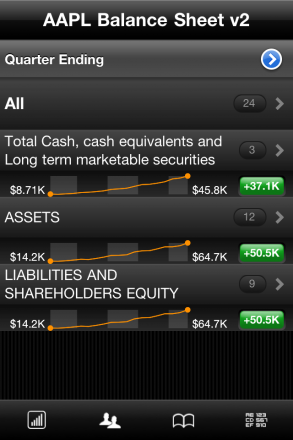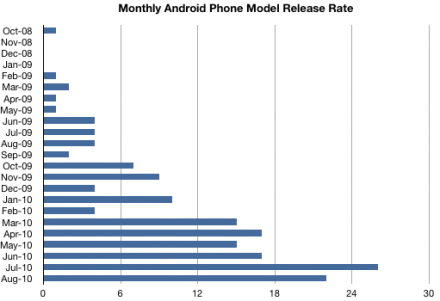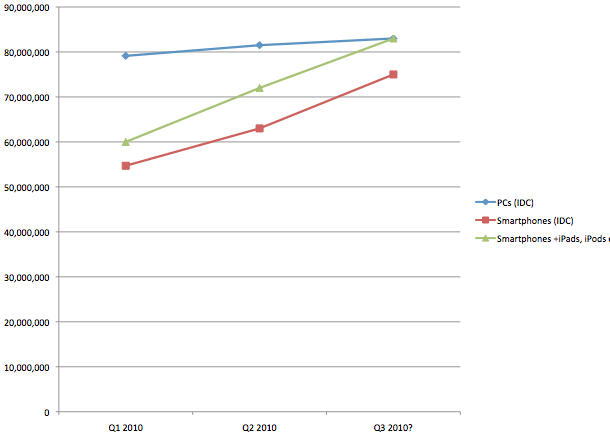Only on Asymco…
Let your fingers do the walking through Apple’s income statements since FQ1 2005. Glide effortlessly through juicy bits of assets and liabilities. Slide your finger through nineteen quarters of financial goodness.
A special bonus: included is a separate visualization of Apple’s liquid assets: cash, cash equivalents, Short-term marketable securities and Long-term marketable securities. $$$$$!
Brilliant to use and look at on both iPhone, iPad and iPod touch:




